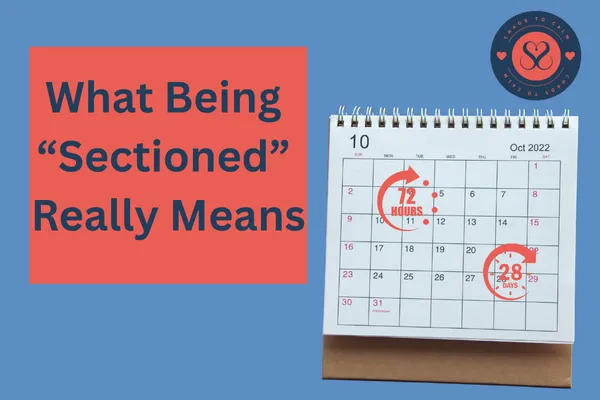
What Being Sectioned Really Means – A Parent’s Guide
Learning in the Storm: What “Being Sectioned” Really Means

When the system uses numbers, but parents are left counting the hours.
Content warning: Mentions of self-harm, suicidal thoughts, and mental health crisis.
When someone says “She’s been sectioned”, it sounds final, like a decision has been made and your child is now safe.
But what I’ve learned is that sectioning isn’t one thing. It’s a maze of rules, numbers, timeframes and paperwork that changes faster than your heart can catch up.
If you’re new to this world, this is what I wish someone had told me before we started this awful, confusing loop.
1. “Informal” doesn’t mean safe
When my daughter was first admitted, she went in informally, meaning she agreed to stay voluntarily. It sounds reassuring, but here’s the problem: if they want to leave, they can.
And when someone’s in crisis and suicidal, that’s terrifying.
Learning: “Informal” status gives them more freedom, but it also means the hospital can’t stop them from walking out. Sometimes, being sectioned is the only way to keep them alive.
2. Section 2: The 28-day “assessment” section
This is the one most people mean when they say someone’s been sectioned.
It allows doctors to keep someone in hospital for up to 28 days for assessment and treatment.
But “up to” is the key phrase, it can be lifted at any time if the team thinks the risk has reduced. That’s how you end up with people like my daughter being sectioned, unsectioned, then sectioned again within days.
Learning: 28 days doesn’t always mean 28 days. It’s a maximum, not a guarantee of safety.
3. Section 5(2) or Section 5(4): The emergency ones
These are short-term “holding” sections 72 hours or less. They’re used when someone wants to leave but staff believe it’s unsafe.
It buys time for a full assessment. In practice, it’s chaotic, paperwork, panic, phone calls, and parents sat in car parks waiting for updates.
Learning: A 72-hour section is just a pause button, not a plan.
4. Reviews and discharge meetings
Every section has to be reviewed. Sounds good, right? Except reviews often happen with doctors only, no nurses, no one who actually sees your child day to day.
In our case, three doctors decided she was “doing well” because she was engaging, polite and appeared calm. They didn’t see the storm underneath.
Learning: Speak up. Tell them what you see at home, what you hear at night, what the staff might miss. Your voice matters more than you realise.
5. Support after discharge (or lack of it)
When they say there’s “home-based support” after discharge, manage your expectations.
In reality, it’s usually a phone call, sometimes from a stranger, often male, even when you’ve requested female-only contact. Crisis services are the same.
Learning: Ask specific questions —
“What does support actually look like?”
“How often will someone check in?”
“Who do we call if things go wrong?”
Final thought
Sectioning isn’t a tidy safety net, it’s a patchwork. It keeps people safe enough for a time, but families end up filling the gaps.
You become the safety plan, the advocate, and the witness, all at once.
If you’re reading this while your loved one is in hospital, I know how disorientating it feels. Keep a notebook, ask the awkward questions, and remember: being persistent doesn’t make you a problem parent. It makes you their lifeline.
Your calm in the chaos,
Sami
